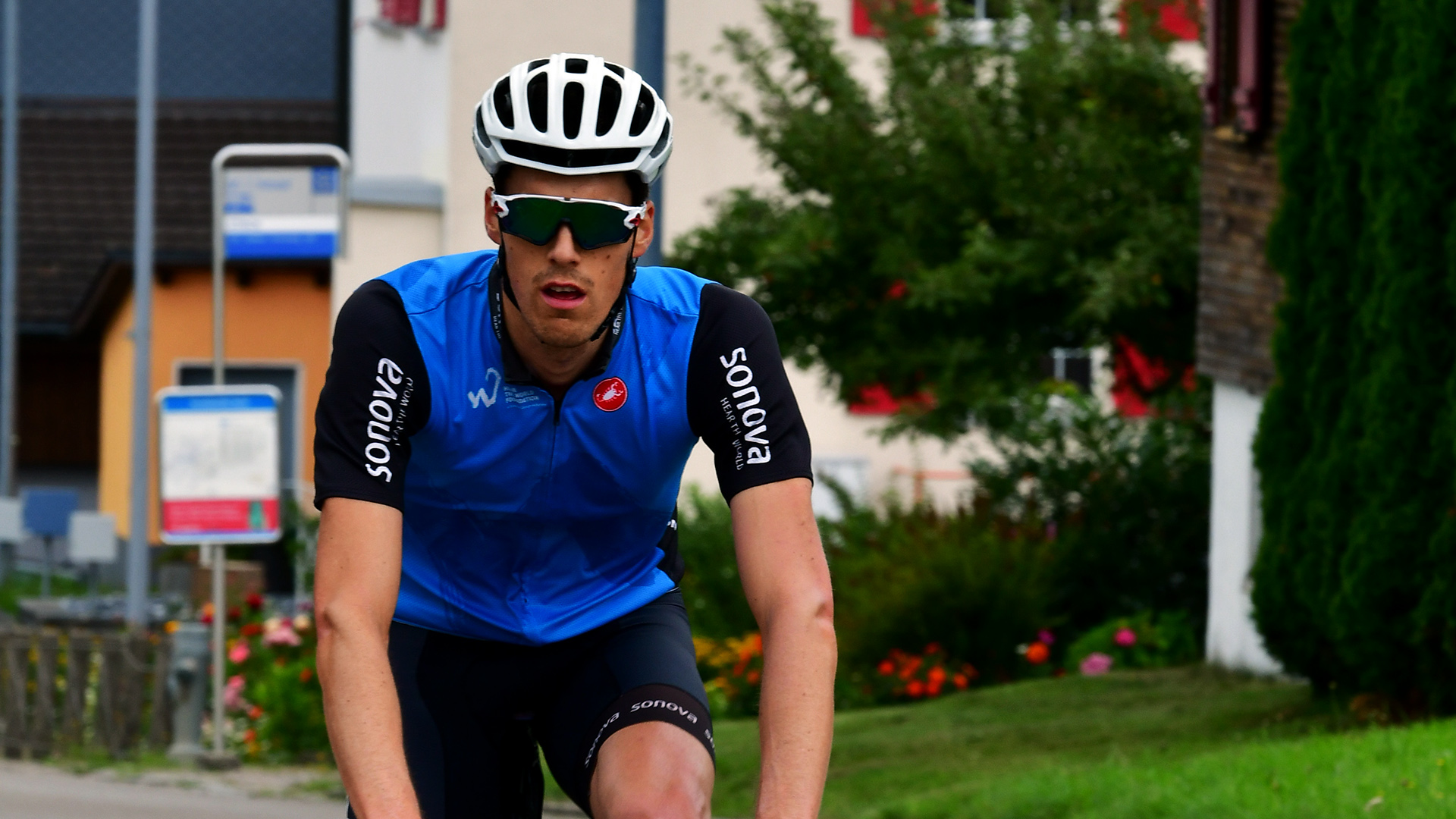Painful hip joint injury due to femoral head necrosis at a young age
Our myPRP series shares stories from our patients on their very personal experiences with biosignalled healing.
We’re fully aware that we can’t take this for granted and would like to thank you very much for your openness.

Hip replacement? At thirty-four?
I went to Dr. Schnorr’s office at the beginning of August 2021. One of the things I went to see him about was a long history of issues in my right hip joint.
I’d already had two hip operations during my long history; they even recommended hip replacement at my last consultation. A colleague suggested that I look into conservative treatment using platelet-rich plasma (PRP).
I’m thirty-four and in good physical shape, but I’d been suffering from debilitating complaints since the end of 2019 that had been worsening, preventing pain-free movement in everyday life, and disturbing my sleep. Any kind of sport was out of the question. The pain sometimes felt like tugging, sometimes stabbing, sometimes a serious combination of irritation and pain.
At the first visit, the doctor discussed the situation with me in detail after gathering information from my account of the symptoms as well as my disease history records, clinical and ultrasound findings, and current radiological results.
To help me understand the situation better, Dr. Schnorr explained what effects should be expected and monitored from orthobiology (biosignalised treatment of the musculoskeletal system) and the methods used, especially platelet-rich plasma (PRP) therapy, and the scientific fundamentals and limitations that apply.
The doctor explained that the completely conservative orthobiological setting on the serious hip problem that I had would only affect the symptoms, capsular motility (by stimulating the elastic function of the capsular ligament structures of the hip) and tendon insertions into the muscles around the hip.
He got straight to the point on the limits of treatment using this method. I was not to expect any change in the heavily modified hip joint structure. Strictly speaking, they had been perfectly justified in discussing and recommending hip replacement.
We also discussed surgery to preserve the joint due to the changes in the bone around to the joint. Intraosseous treatment, which involves a kind of injection into the bone at the joint members, may help stave off total hip endoprosthesis for a time in some cases. Dr. Schnorr consulted his office colleague Dr. Ursus Lüthi on using this treatment.
The very next day, they reported back to me that this otherwise beneficial approach was not indicated in my case with respect to the surgeons at FIRST, Dr. Luthi and Dr. Schnorr, considering all the outcome, risk, and cost factors involved.
I opted for the triple injection treatment with platelet-rich plasma as suggested.
Movement began to feel easier just seven days after the first injection to the hip. The second infiltration came after the slight benefit from the first. I went to see Dr. Schnorr again for the third infiltration after seven more days. At this point, I still experienced occasional slight hip symptoms in the evening after standing for longer periods throughout the day, and I was already very satisfied with this development.
They asked me about residual symptoms in an assessment of how far I was on the way to completing the treatment target. This was based on a range from 100% pain and discomfort to 0% residual symptoms, meaning complete freedom from pain. My assessment at this point: 10–15% symptoms still present, improvement at 85–90%. Yes, I was already very happy at this point.
I had started to feel pain in my right knee in the meantime; this was sporadic and felt like pressure and sometimes a stabbing sensation under the kneecap. Ultrasound showed activation of a fat pad in the joint, the suspected cause being improper weightbearing on the leg axis due to my hip problems. Dr. Schnorr recommended laser therapy (photobiomodulation), which could be used painlessly and without risks, and advised me against the third infiltration on the hip. This is no longer necessary.
I went back to the doctor for follow-up in mid-November 2021. I am extremely happy with the hip outcome. I have hardly any issues now. I can live very happily with this situation. My knee has also undergone significant improvement with an occasional brief stabbing sensation. We’ve agreed to conclude treatment, albeit with supportive ointment for topical application to the knee.
